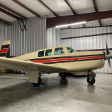Oil on Windscreen, what to do
-
Members Online
- MikeOH
- Wildhorsetrail
- Gone
- 201Steve
- Medicpilot
- Nokomis449
- Pinecone
- Tx_Aggie
- Q The Engineer
- masouds
- mgtrevor
- ArrowBerry
- marcusku
- Culver LFA
- 65MooneyPilot
- GeeBee
- AlexC1201
- bigmo
- Grant_Waite
- redbaron1982
- M20F
- Lax291
- Captnmack
- Skates97
- kortopates
- CL605
- Will.iam
- EricJ
- Planegary
- Rocket_Driver
- Buckeyechuck
- takair
- Ron McBride
- varlajo
- Glenn
- M20S Driver
- Aerodon
- Rotorhead
- DContreras96
- hammdo
- Ragsf15e
- birdofjoy
- AH-1 Cobra Pilot
- OneSaltyItalian
- tomgo2
- jamesyql
- N201MKTurbo
- pkellercfii
- hphillips


Recommended Posts
Join the conversation
You can post now and register later. If you have an account, sign in now to post with your account.